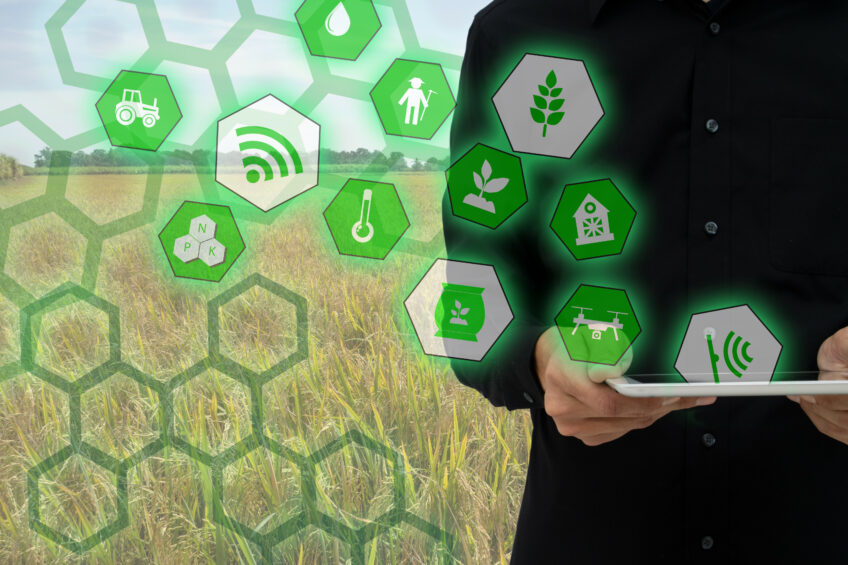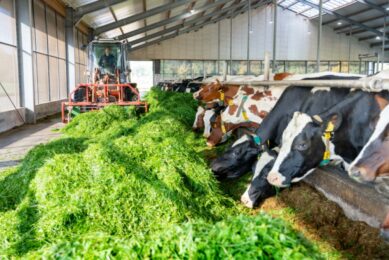A glimpse at the dairy sector in 2067

The year 2067 sounds far away, but researchers still have a relatively good idea what the dairy sector will look like by then.
This is written in an invited review, made by UK and US researchers, including Michael Hutjens from the University of Illinois. The review has been published in the Journal of Dairy Science.
3 global changes to affect dairy farming
In the review a list of 3 global changes that affect the dairy consumption and production on a global level by 2067.
- Population growth: The worldwide population in 2067 will reach 10.5 billion with 81% residing in Africa or Asia. Half of the world’s population in 2067 will live in 10 countries, ranked by population: India, China, Nigeria, United States, Pakistan, Indonesia, Democratic Republic of the Congo, Ethiopia, Brazil, and Bangladesh.
- Arable land: Currently, there is a 6-fold difference in amount of arable land (ha per person) among regions of the world. By 2067, there will be an estimated 0.15 ha of arable land per person worldwide. Increased use of permanent grasslands and byproduct feeds for milk production will decrease pressure on arable land and improve food security in countries that have lands for permanent grazing.
- Climate change: Changes in climate during the next 50 years will affect where dairy farms and cattle are located and focus more attention on types of cattle that are adaptable to various regions. Temperature will increase in tropical and temperate zones, especially in the Northern Hemisphere, and this will push growing seasons and dairy farming away from arid areas and into more northern latitudes.

600 billion kilograms more milk
Worldwide, annual consumption of dairy products (fresh milk equivalent basis, not including butter) currently averages about 87kg per person and is expected to increase to 119kg per person worldwide by 2067. Increased consumption of dairy products coupled with increased growth in population translates into a need for approximately 600 billion kilograms more milk in 2067 than is produced today. To produce this volume, an average dairy cow on the globe would need to double its annual yield from 2,405kg to 4,531kg. This seems unlikely to occur because many countries with lowest annual production per cow have the most cows (Figure 1).
Fewer inputs needed for farm of the future
According to the review, the future proof farm is a profitable one and profitability of dairy farms will be the key to their sustainability. Profitability of dairy farms is influenced primarily by value of milk in the marketplace, cost of feed, and average fixed cost per cow or unit of milk sold. Dairy farms will become more automated and will utilise sensors and technologies to improve sustainability, particularly associated with soil and crop health, water quality, and emissions. Crops and feeds will require fewer inputs such as fertilisers and pesticides and will be more digestible. In 50 years from now, the farms will also have much more specialisation in managing cattle of different ages and stages of production. This is called lateral integration, where farmers share resources and specialise in managing specific animal units. The review also mentioned that, in the future, smaller dairy farm enterprises will collaborate and adopt practices of larger enterprises to remain economically competitive. This will eventually lead to vertical integration of smaller units in commercial dairy sectors.
Focus on epigenome and microbiome of cow
The authors agree that the cow of the future will be a robust one with improved health and longevity, driven by genetic improvements. Genomic selection will expand in areas related to immunity, disease resistance, reproduction, and mastitis. Epigenetics (parts of the dairy cattle genome and how these affect gene function in response to environment) and understanding microbiomes (genomes) of organisms in cattle fed and managed under various conditions, will become part of routine herd management. As there will be greater emphasis in the future on selection for milk solids rather than yield of milk, it is expected that genetic selection indices will place positive emphasis on fat and protein yield with no weight or a negative weight on milk volume (more than already done today).
Challenges for exporting countries
Today’s major dairy exporting countries are in Europe, North America, and Oceania. Asian and African countries export small percentages of production. The authors expect that these exporting regions and associated companies are positioned to meet a significant portion of growth in future demand for dairy products, primarily because they have capacities to produce more milk and to process it into exportable products, and their domestic populations are growing slowly or declining. A challenge for dairy exporting countries and regions will be to develop products that provide affordable dairy-based nutrients to meet the needs of children and adults in countries in which demand will exceed local or regional supply.
Join 13,000+ subscribers
Subscribe to our newsletter to stay updated about all the need-to-know content in the dairy sector, two times a week.










